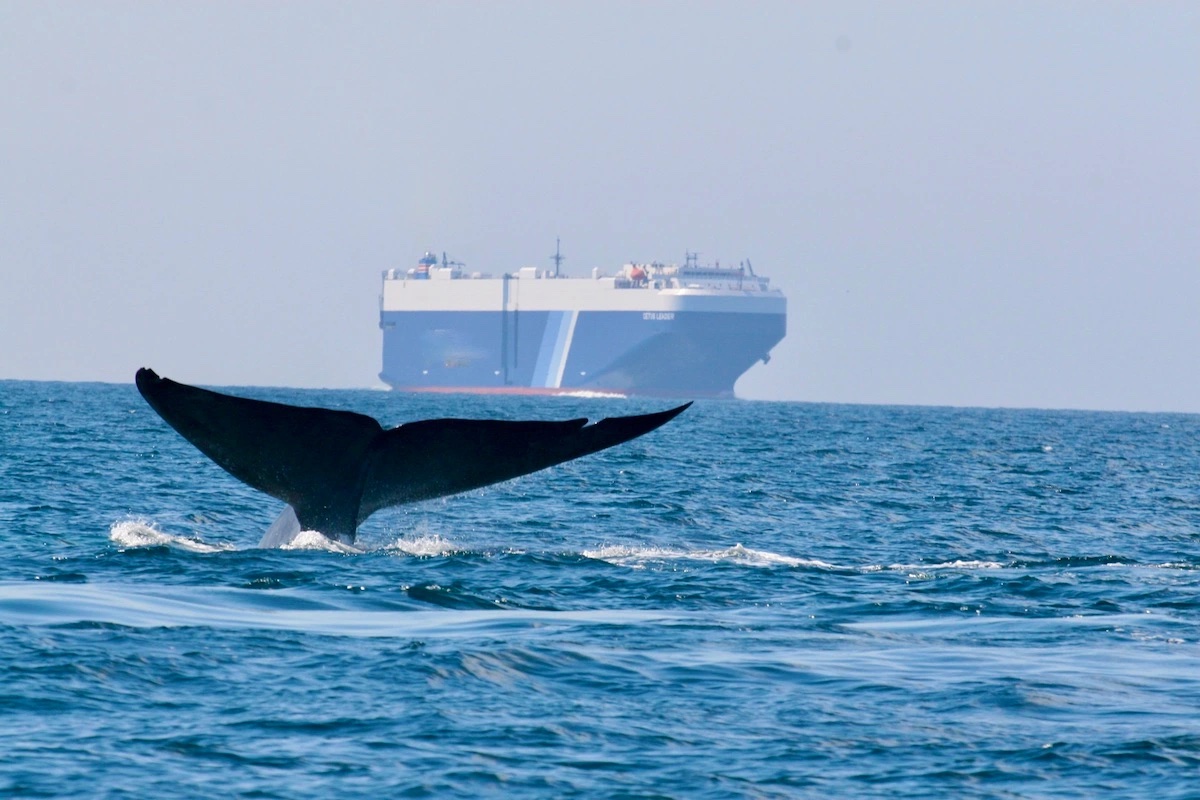More Ships than Ever Slowed Down to Protect Blue Whales and Blue Skies in 2022
Twenty-Three Shipping Companies Participated Last Year in Voluntary Incentive Program to Clear the Air and Protect Endangered Whales

Shipping companies along the California coast are clearing the air and protecting endangered whales simply by slowing down in designated speed zones.
Twenty-three shipping companies participated in the Protecting Blue Whales & Blue Skies vessel-speed-reduction program, a collaborative effort by multiple state and regional environmental organizations, from May 1 to December 15, 2022. The 2022 season marked the voluntary incentive program’s seventh year with greater participation than any previous year.
The timing of the program — the Southern California region of which expands from Point Arguello in Santa Barbara County to waters near Port Hueneme in Ventura County — coincides with the season when ground-level ozone (smog) concentrations are typically high and when migrating whales are in abundance.
By traveling at 10 knots or less in designated speed-reduction zones, a ship uses less fuel and decreases the risk of fatal collisions with endangered blue, humpback, and fin whales.
“This innovative incentive-based vessel-speed-reduction program, in collaboration with county air management districts, the shipping industry, other agencies, and NGOs, serves as a model for enhancing ocean and human health while promoting a sustainable, blue economy,” said Chris Mobley, superintendent of Channel Islands National Marine Sanctuary.
According to the Santa Barbara County Air Pollution Control District (APCD), ocean-going vessels account for nearly 200 tons of nitrogen oxides (NOx, a precursor to smog) emitted per day off the coast of California.
Ship strikes, in addition, accounted for 52 observable deaths of endangered whales from 2007-2022, which APCD said likely represents “only a small fraction of the total number of ship strikes taking place annually.”
Slower transit speeds help protect vulnerable whale populations from fatal ship strikes. According to the APCD, of the 344,000 nautical miles of ocean transited by all the ships in the 2022 program, nearly 270,000 nautical miles were at 10 knots or less.
The 2022 season’s participating shipping companies reduced their air pollutant emissions by 27 percent, equating to approximately 920 tons of NOx and 32,000 metric tons of regional greenhouse gases. “For comparison, the NOx reductions are equivalent to converting 580,000 passenger vehicles to zero emissions for a single year,” the APCD said.
The 2022 program used a tiered award system and financial incentives ranging from $2,500 to $20,000, but 14 companies declined all or part of the incentive payments, which will be used for additional public recognition efforts and reinvested in the program. For the 2023 program, no financial incentives will be provided, based on feedback from participants.
With new partners and an extended area of speed-reduction zones in the Northern California region, the 2023 season of the program — beginning on May 1 — is set to be the biggest one yet. In addition, Assembly Bill 953, authored by Assemblymember Gregg Hart of Santa Barbara to implement the program statewide, was recently amended and is currently under committee review.
“We applaud the participating shipping companies, many of which have returned to this program year after year,” said Aeron Arlin Genet, APCD’s air pollution control officer. “Their voluntary efforts to reduce speeds have again translated to significant benefits for air quality and endangered whales. This program continues to show what great things can happen when local, state, national, and international organizations collaborate.”



